If you follow Reverb on Facebook or Instagram, you may have noticed that we aren't especially bashful about showcasing really expensive gear. While a jaw–dropping price tag alone isn't enough to make a listing interesting, many of the world's most intriguing and exotic instruments do tend to fetch staggeringly high prices.
When we share listings with prices surpassing six figures, we typically see comments ranging from simple envy and zippy punchlines to legitimate offense and outrage. We hope that people remember that we at Reverb HQ don't set prices on any listings (that's up to the individual sellers), and the best we can do is present these pieces objectively and with sufficient context to understand their significance.
In that spirit, we thought we'd spend some time today looking at five of the most expensive listings currently on the site and offer some explanation of where these seemingly outrageous prices come from.
While the actual intrinsic value of any of these items can be debated for ages (see every gear forum ever), we're not here to make judgements and will try to stick to the stories and market dynamics surrounding each piece.
We'll start our review with a subject we've covered in the past: a Gibson Les Paul "Burst" from 1960. When guitar collectors talk about "Bursts," they're referring to the Cherry Sunburst–finished Les Paul Standard models built by Gibson from 1958 till the end of 1960.
There are shelves worth of books and articles devoted to these guitars and their mystique, but in very brief summation: Gibson introduced the Les Paul model in 1952, which underwent a series of changes throughout the decade, including the introduction of a Tune-o-matic bridge in 1955 and humbucker pickups in 1957. In 1958, the stock finish on the Les Paul Standard switched from gold to an iconic yellow to a red sunburst that highlighted the flamed woodgrain of the maple top.
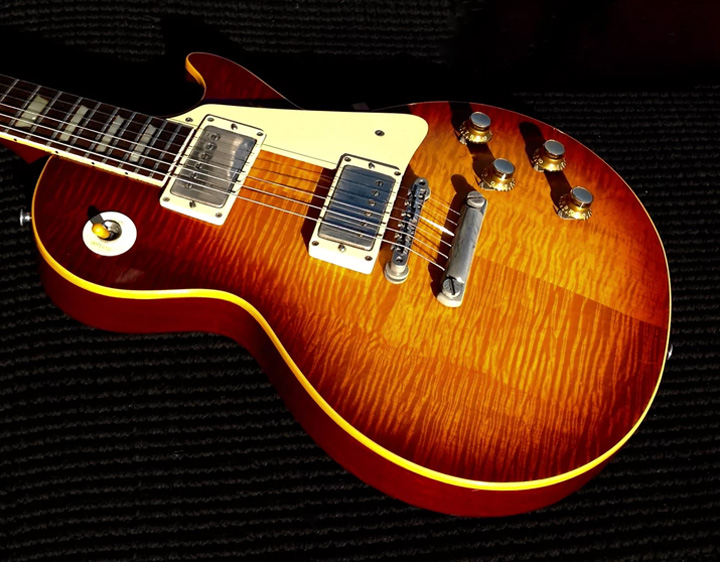
This specific cross–section of specs and appointments was only produced for three years until the new SG body shape replaced the Les Paul design altogether in 1961. For many players, these instruments set the benchmark for all subsequent solidbody guitars in terms of sound, playability, and aesthetic.
Though not especially successful during their original run in the ‘50s, players like Eric Clapton, Keith Richards, and Mike Bloomfield began playing these discontinued instruments in the late ‘60s. This sparked a resurgence with icons like Jimmy Page and Duane Allman cementing the Burst's reputation in the '70s.
The Burst's legacy has evolved ever since. Even though Gibson has been producing a massive range of Les Pauls continuously since reviving the design in 1968, for collectors, none of those guitars really cut the mustard when compared to original Bursts.

Estimates vary, but most place the number of original Bursts produced by Gibson somewhere around 1,700 with fewer than 1,000 currently accounted for. Pricing on an individual Burst is always done on a case–by–case basis, which centers around three primary factors: originality and condition of the components, vibrancy of the sunburst finish, and most of all, the grade of the flame pattern on the maple top.
Typically, '59 Les Pauls are the most sought–after, but a really stunning '58 or '60 model can surpass a middle of the pack '59.
Prices on Bursts rose in step with the overall vintage guitar market throughout the '90s and 2000s. You can find articles from the early '90s, for instance, that cite prices in the $10,000 range, while some reports from the early '80s cite $5,000 as the high watermark. Today, prices typically sits strongly in the six figures, despite the slight dip in the high tier market attributed to the 2008 recession.
As you can see from the image above, this particular Burst gets an absolute A+ for its flame, which partially explains the high price. Additionally, according to the seller on this guitar, this is the last known Burst ever made. These sorts of claims can be difficult to verify, but the serial numbers check out making this an especially significant guitar in the broader history of the Les Paul.
There are at any time at least a handful of Bursts for sale on Reverb with asking prices spanning from around $100,000 to closer to $1,000,000. It's important to remember that for top of the market sales like these, the asking price is very much just that: a starting point for an involved and often lengthy negotiation.
One could argue that the Les Paul "Burst" of the '50s created the template for high–end solidbody electric guitars. To say the same about the Lloyd Loar era Gibson F–5 and its influence on mandolin craft doesn't even require an argument.
Built between 1922 and 1924, F–5 mandolins produced under the tutelage of Gibson engineer Lloyd Loar brought together the latest theories of mandolin design into a single, perfected instrument. In this era and the years preceding, Gibson heavily marketed mandolin family instruments, and the F–5 of the early '20s can accurately be viewed as the culmination of the first chapter of the Gibson story.
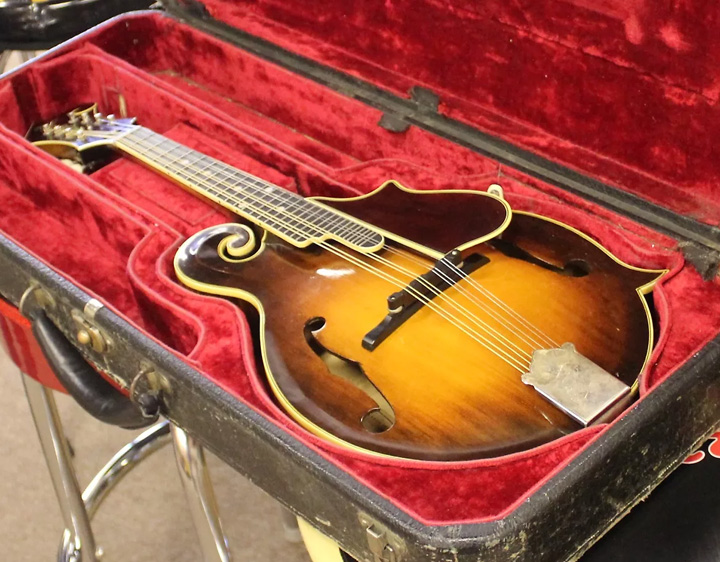
Lloyd Loar was a gifted musician who was passionate about sound and musical innovation. His work in developing the F–5 brought the mandolin closer in line with classic European violin craft, adding such updates as a carved soundboard and back, internal tone bars, a longer neck, a centered bridge, and a fretboard that was elevated above the body of the instrument. While these innovations can be found on earlier instruments, the Loar F–5 was the first to combine them in a replicable way.
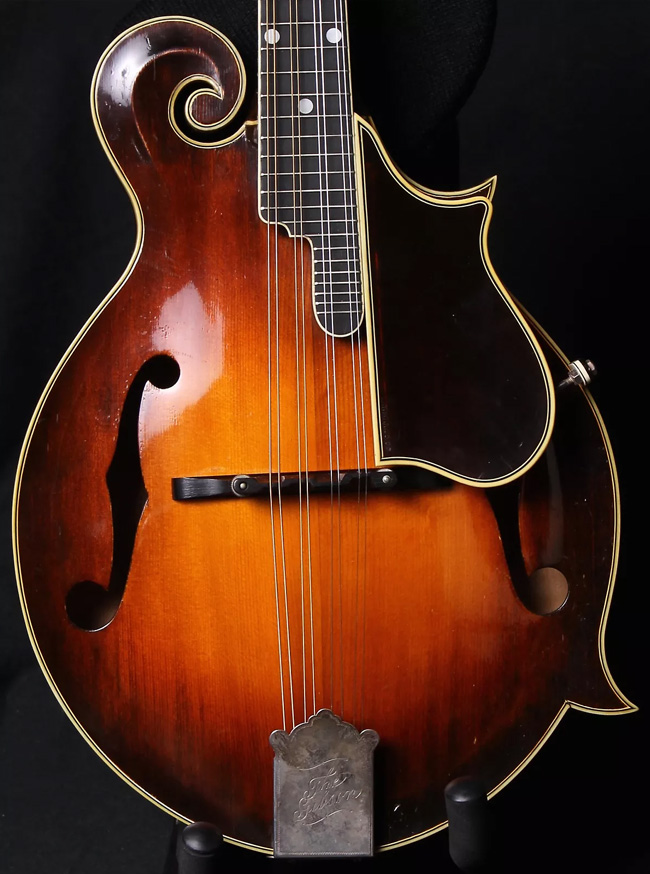
Somewhere in the neighborhood of 300 F–5s were produced and signed by Loar before he departed Gibson. Later in life, Loar co–founded the ill–fated though extremely groundbreaking Vivatone company before ending his career as an acoustics instructor at Northwestern University.
It was in his time with Gibson, though, that his place as one of the key musical instrument innovators of the century was secured.
Perhaps the most well–known Loar adherent was Bill Monroe, whose F–5 currently resides in the Country Music Hall of Fame. In many ways, the innovations Loar brought to the instrument unlocked a new style of playing, which provided the antecedent of bluegrass music itself. For high–end mandolin collectors, owning an F–5 is to own a genuine slice of bluegrass and country history.
This example — for sale by Norman's Rare Guitars — is in excellent shape with a rich sunburst finish and the highly flamed maple back and neck that collectors crave. As with the Bursts above, Loar F–5 pricing is extremely case–specific, but typically these sell in the $100,000 to $200,000 range, earning their spot as the most expensive mandolins on the market.
These days, much of the recording gear industry centers on interfaces and DAWs that allow everyone and their bassist to enjoy the pleasures of multitrack recording. For high–end, professional studios though, tapping into the sounds of the classics requires some heavier artillery than the average Pro Tools rig has to offer.
While there are still plenty of excellent builders constructing modern studio desks, vintage, purpose–built consoles command a different level of respect, and the work of the mysterious Daniel Flickinger is second to none in terms of sound quality and innovation.
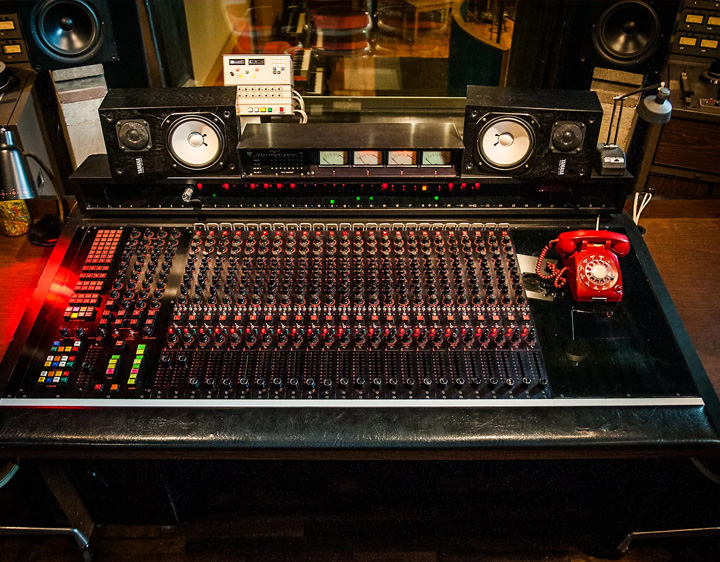
Flickinger produced just 23 recording consoles in the '60s and '70s before vanishing from the audio world completely. His systems stocked the studios of Motown Records, Johnny Cash, and Muscle Shoals, bringing a unique sound and a number of freshly developed studio technologies to each room.
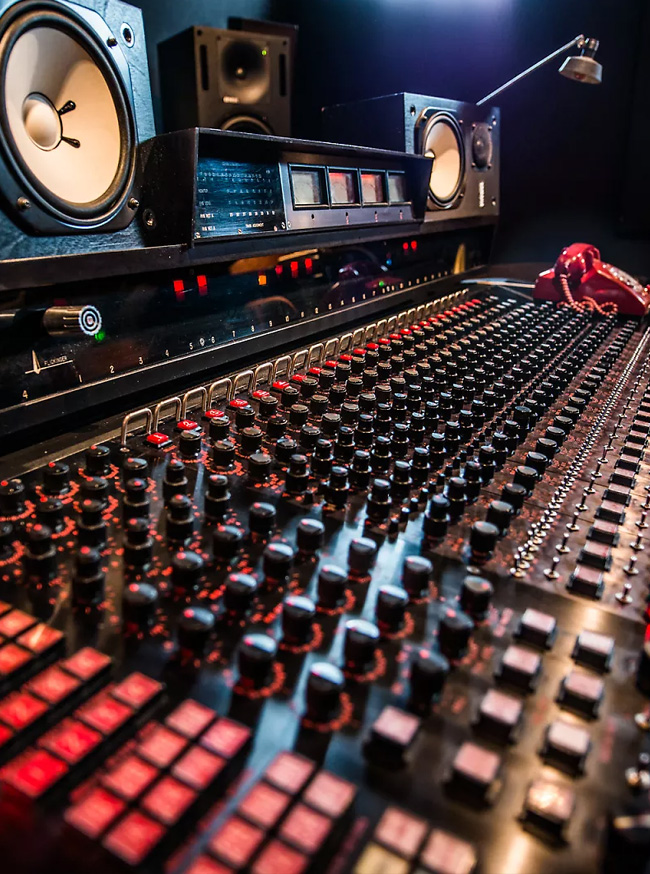
As Steve Albini once put it on a forum, "I will go to my deathbed claiming Flickinger consoles are the best–sounding mixing desks ever made. Period."
This N32 console has been fully restored and tested, and is for sale by studio owner and Flickinger devotee, Bill Skibbe of Key Club Recording in Michigan. It was ordered and owned by Sly Stone who used it to make some of his landmark records including "There's a Riot Goin' On."
A unit like this is obviously not for your average home recordist, and this listing is targeted for a studio owner looking for the centerpiece of their operation. Studio pros follow these historic consoles like baseball fans follow pitchers hitting free agency. They know where they've lived, what records they've made, and when one comes to market, they're bidding on the entire legacy.
For a vastly more in-depth exploration of this Flickenger, click on over to our article about the Sly Stone console.
Dumble amps, built by Alexander "Howard" Dumble in Los Angeles, are, without a doubt, the most coveted guitar amplifiers to ever capture the collective imagination of the guitar–playing public.
The Dumble owners' club represents an exclusive tier of the world's most dedicated tone–chasing population, and has counted the likes of Carlos Santana, Stevie Ray Vaughan, John Mayer, and Joseph "Joe" Bonamassa in its ranks.
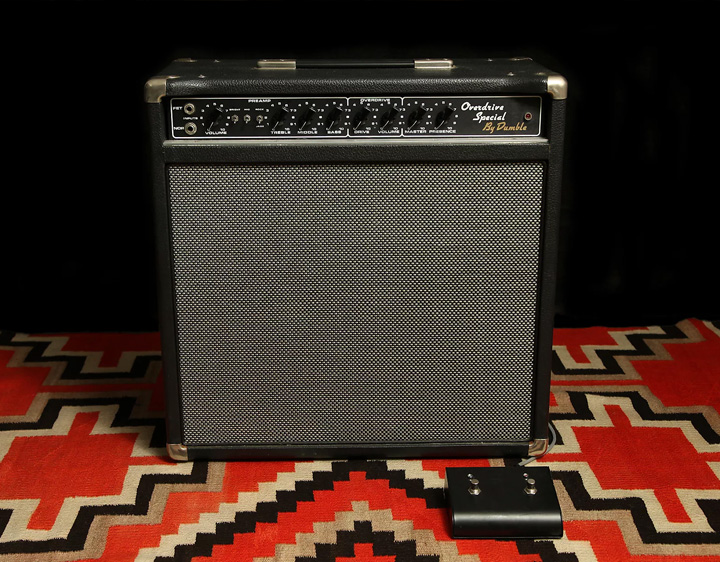
Like Randall Smith and his nascent Mesa/Boogie brand, word of Mr. Dumble's custom amplifiers began to catch on with professional musicians in California in the '70s. Unlike Smith, however, Dumble never sought to scale up production and kept his output extremely low.
Distribution and sales of these amps were kept so tight that Dumble required interested buyers to submit an application to claim a spot on the waitlist. When a buyer was accepted, they were asked to sign contracts to ensure they would not reveal the innards of the amp to anyone in an effort to thwart potential reverse engineering.
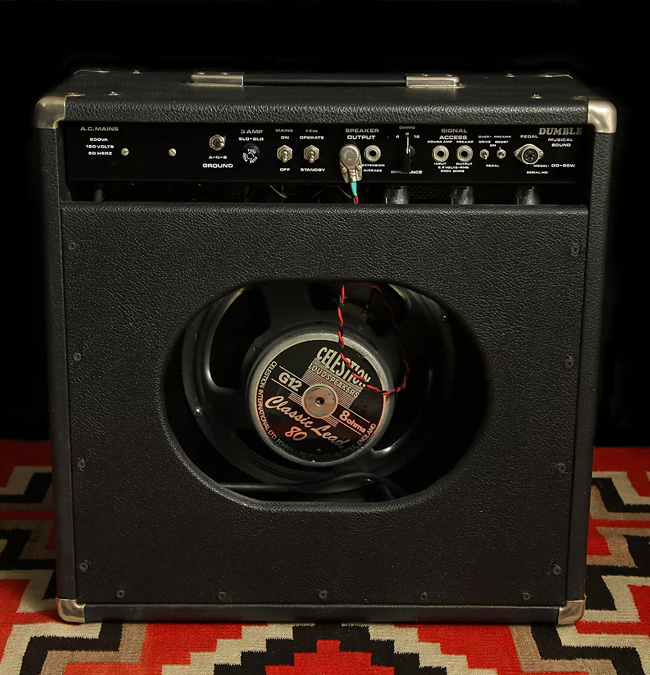
Later, Dumble began covering his circuit boards with black epoxy to further confound potential copy cats.
There are 300 or so Dumbles in circulation with no sign of any new amps ever leaving the reclusive builder's workshop any time soon. The sound of a Dumble has been described as Fender–like in its lower volume settings, but with an overdrive that stacks and cascades unlike any other amp in the world. We're talking peak creaminess here.
Today, there are plenty of amps in production that promise the Dumble sound for a fraction of the price. Yet gear mythos on the level of Dumble expands perpetually, and like the gain stages found in the circuits of these amps, prices on Dumble keep driving upward.
For the well–heeled collector who's tried it all, landing a legitimate Dumble is the ultimate knighting in the dream rig round table.
Dumble has built a few other circuits and variations, but the Overdrive Special as featured in his listing is the classic model. For some perspective, we've sold a handful of Dumbles on Reverb over the past few years, and all have sold for between $50,000 and $70,000.
While the $115,000 asking price on this specimen may seem far–fetched, interest in Dumbles only continues to climb while the supply end of the equation remains entirely flat, if not trending downward as more collectors snatch up the best examples at higher and higher prices.
The 1930s are known as the Golden Era of Martin production. It was in this decade that the Pennsylvania maker perfected many of the acoustic guitar forms we still play today, with the large–bodied dreadnought ranking as the foremost innovation of the period.
Martin built two primary dreadnought guitars in the '30s: the D–18 and the D–28, which featured mahogany and rosewood backs and sides, respectively. While both remain enduring archetypes of modern acoustic guitar design with an endless list of notable users, the Brazilian rosewood of the D–28 makes it the more sought–after model among collectors.
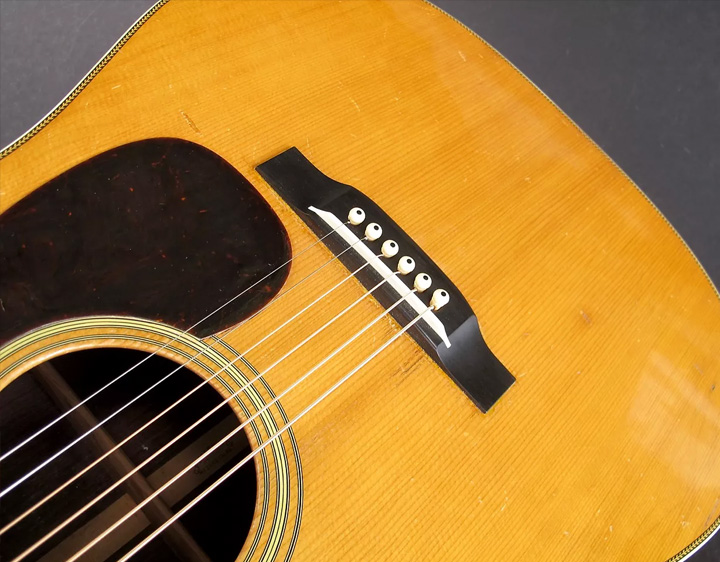
First built in 1931, the D–28 reached its modern form in 1934 when Martin extended the fretboard from 12 to 14 frets clear of the body. Though the rarer 12–fret version is actually more valuable, this whole period is considered the most coveted era of acoustic guitar production ever.
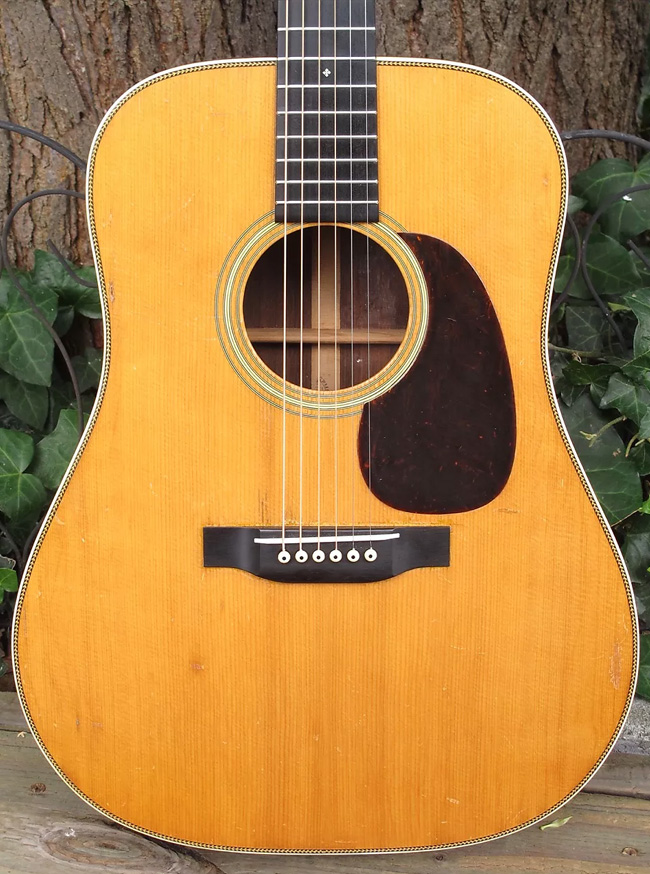
Like many other instrument makers, Martin manufacturing was stifled by the onset of World War II, which makes the window of "pre–war" Martins brief. Martin built around 3,000 guitars total each year during the '30s, and within vintage circles, these are often referred to as "Herringbone" Martins in reference to the patterned binding found on the edges of the soundboard.
It's important to remember that these pre–war guitars were built to be played extensively. Most specimens have lived long, rich lives full of campfires and school dances, racking up their share of bruises and bumps along the way. Neck resets, bridge replacements and other structural repairs are not uncommon and should be expected to some degree.
Today's '35 D–28 does show some of these normal signs of age, but more importantly, carries everything collectors look for in a pre–war Martin. It has a soft V–shaped neck, scalloped bracing, and most importantly, the big booming Martin voice that's made these guitars the go–to guitars of professional players for decades.
Again, like the other entries above, pricing is usually very case–by–case, but it's not uncommon to see pre–war Martins fetch upwards of $90,000 to $100,000.
